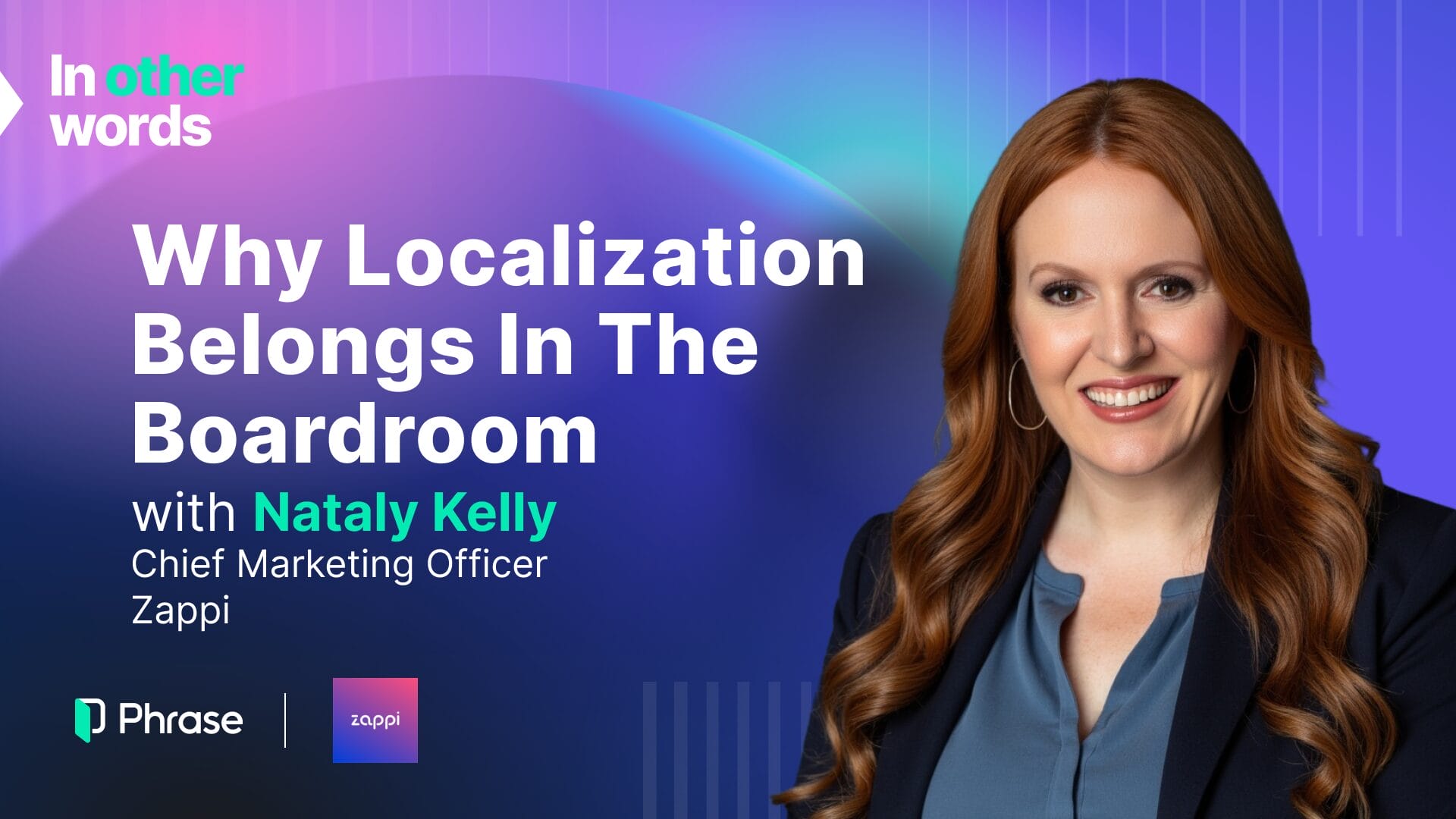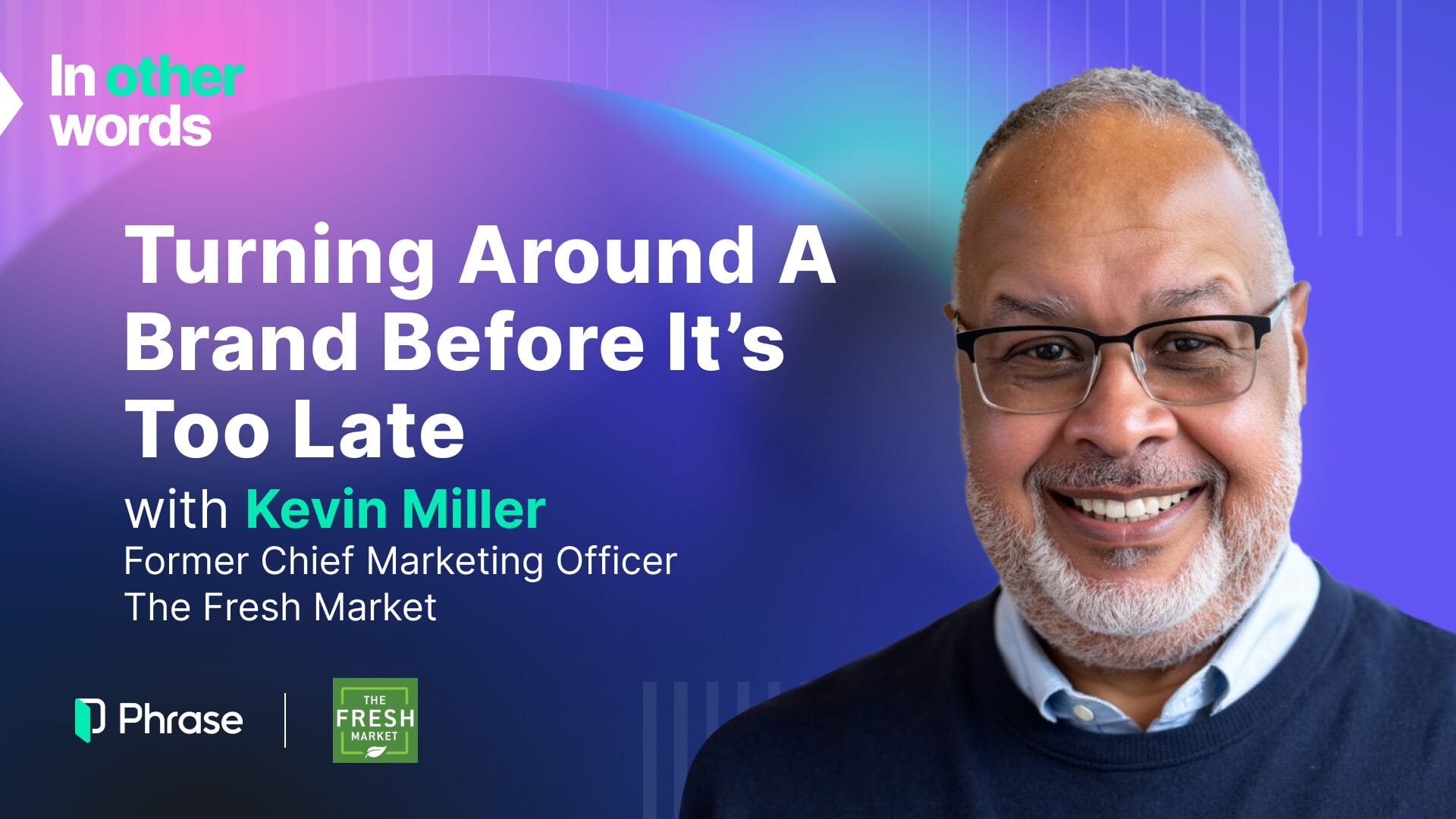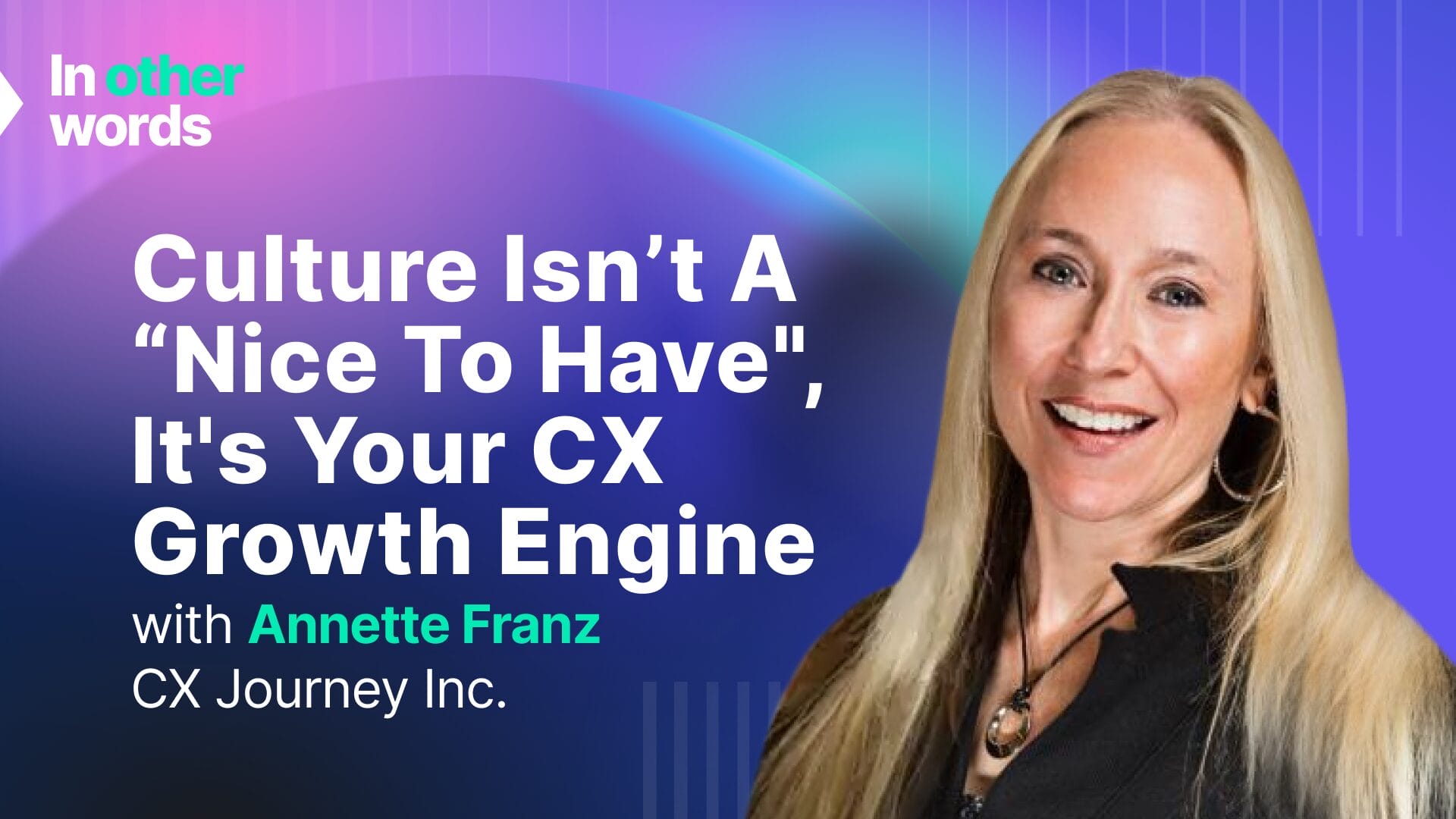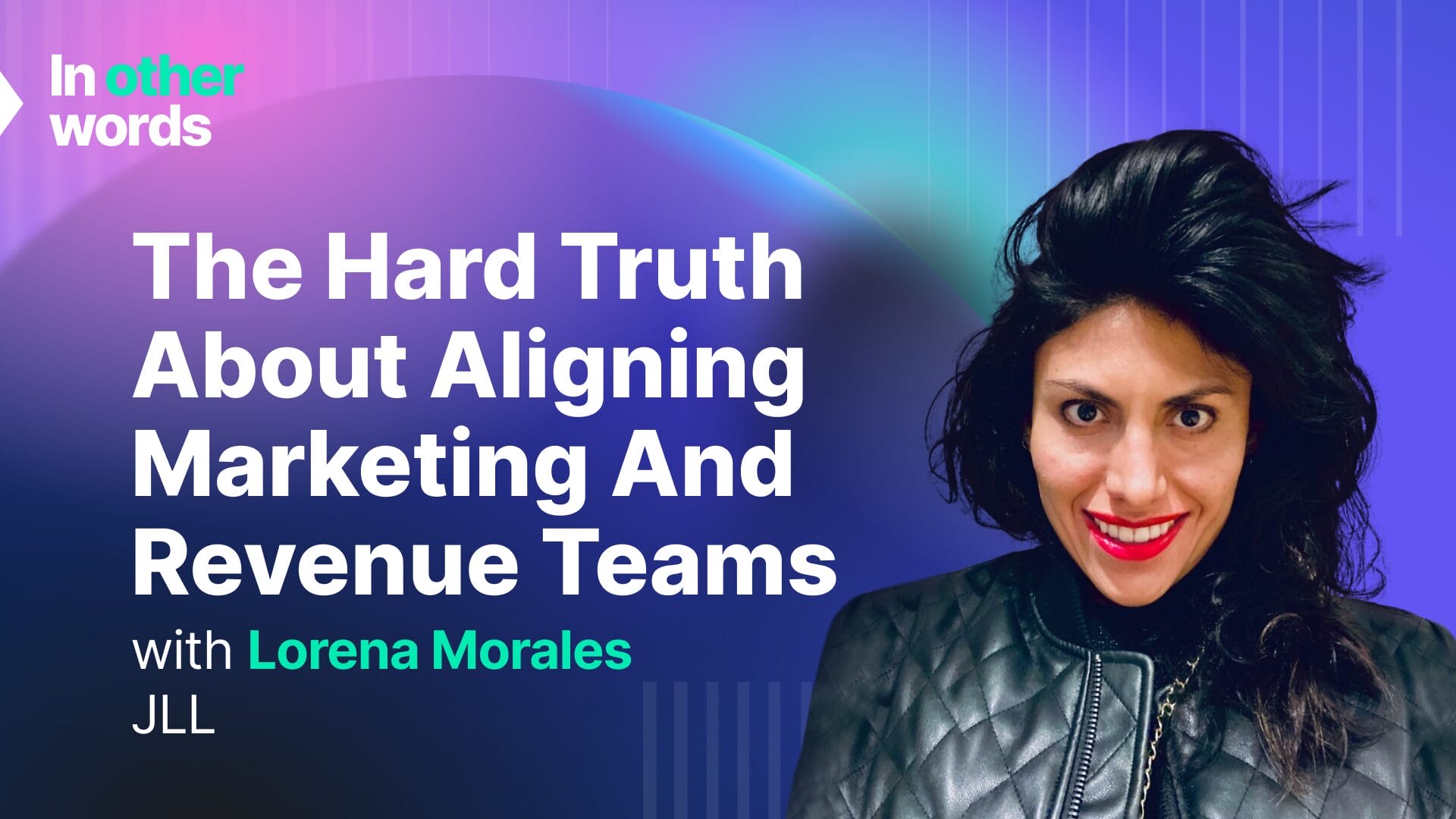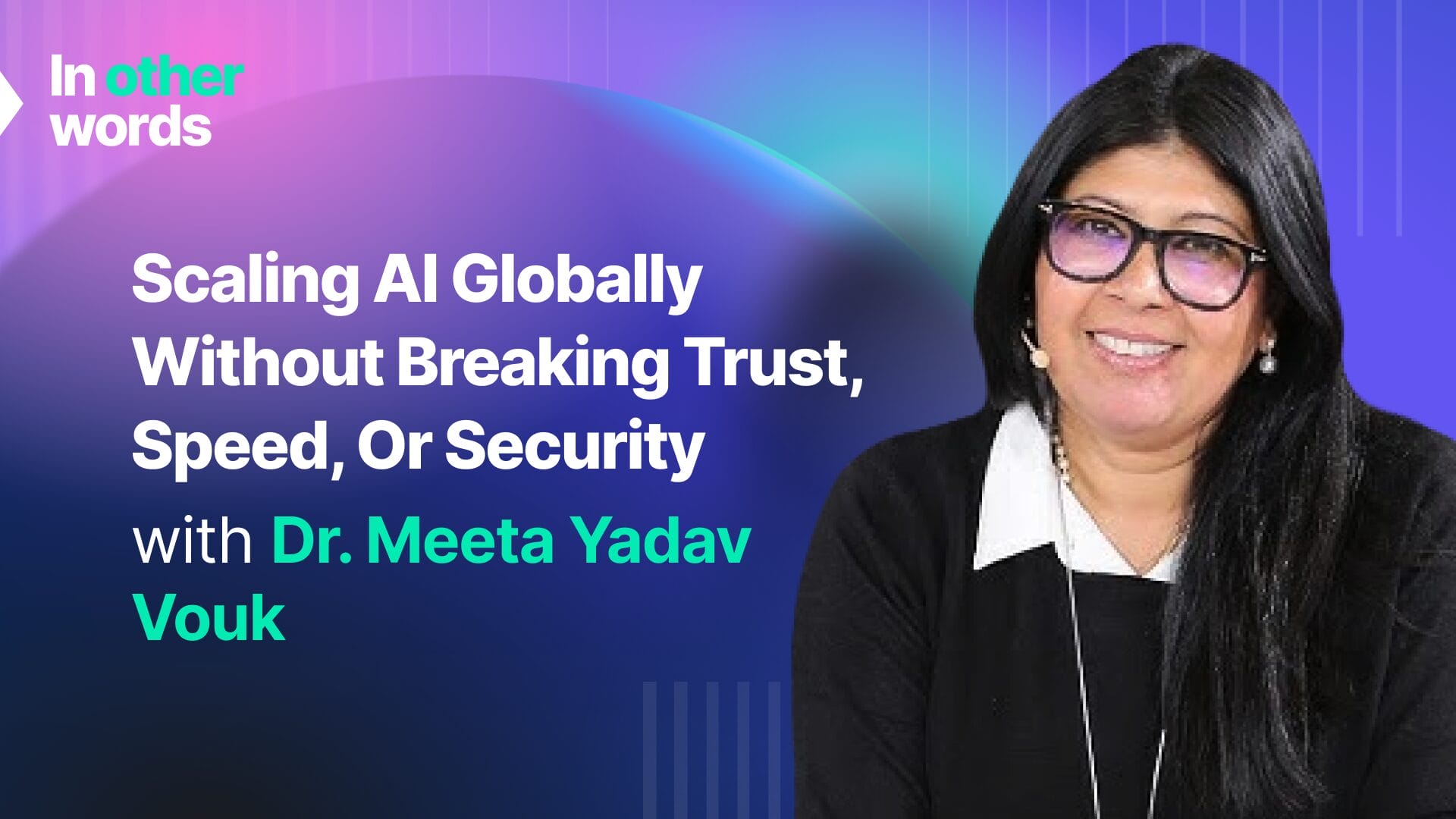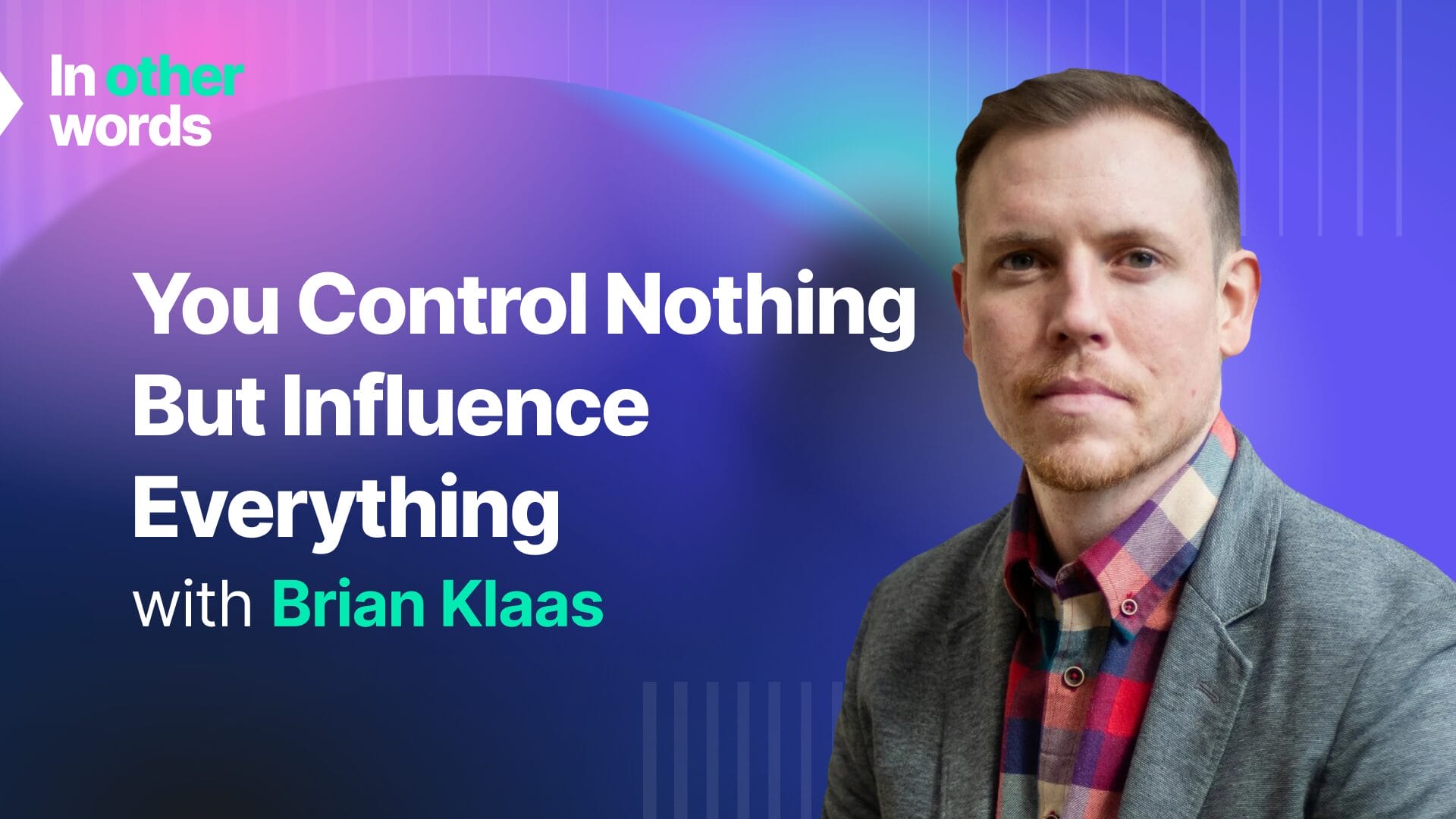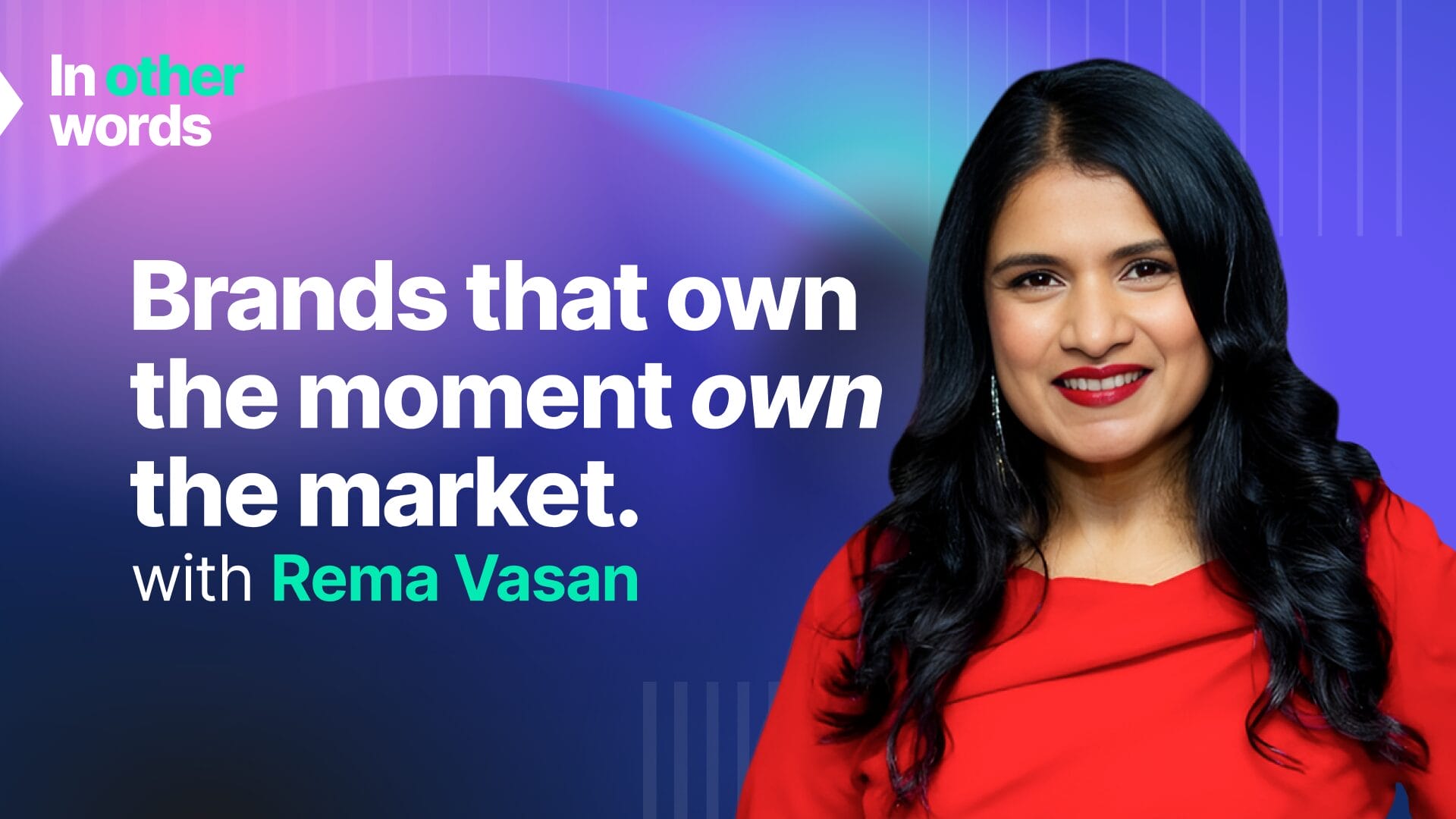The GTM Playbook Big Brands Don’t Want You To See
In this episode, Jason Hemingway is joined by Rob Giglio, Chief Customer Officer at Canva, and Georg Ell, CEO at Phrase. They explore what it takes to build and execute global Go-to-Market strategies that don’t just launch well, but land with lasting impact.



with Georg Ell, Jason Hemingway, and Rob Giglio

About our guest
Rob Giglio is the Chief Customer Officer at Canva, bringing vast expertise in global go-to-market strategy and customer-led growth. With previous leadership roles at Adobe, DocuSign, and HubSpot, Rob has established himself as a leading voice in scaling software businesses across complex international markets.
His experience spans both B2B and B2C sectors, beginning at Procter & Gamble, where he developed his foundational understanding of brand-consumer relationships.
Episode transcript
[00:00:00] Rob Giglio: I think, maybe the translation of simplification in a go-to-market context might be called orchestration. And I think using that phrase is, I like it a lot because immediately, what we start to think of is an orchestra. And an orchestra is made up of lots of different parts. And if any one of those parts was played by itself, it might not sound very good. Like, you know, just the tuba by itself is a lovely sound, but it’s not enough to create a symphony. So I like the idea that there’s a conductor that is putting many pieces together at the right tempo and the right pace, starting it and ending it at the right cadence. And I think that metaphor really pertains to go-to-markets. And so when we talk about simplification, it’s not just taking things away, but, it’s putting the right things in the right place, in the right sequence. And so, you know, we always, everyone overuses this three word phrase, like people, process, and technology, but that’s essentially what it is.
[00:01:06] Jason Hemingway: Welcome to In other words, the podcast from Phrase where we speak with business leaders shaping how organizations grow, adapt, and connect with their customers around the world. I’m your host, Jason Hemingway, CMO at Phrase. And today, I’m joined by Rob Giglio, the Chief Customer Officer at Canva and one of the leading voices in global go-to-market strategy and customer-led growth. Rob’s experience spans Adobe, DocuSign, HubSpot, and now one of the most exciting global platforms for visual communication. Also joining Rob and I is Georg Ell, CEO of Phrase, and he’ll be giving us his perspective as a global tech leader. I think today, we’ll probably just get talking about what it takes to build and execute go-to-market strategies that don’t just launch well, but they land with global customers and actually have lasting impact. So without further ado, Rob, Georg, welcome.
[00:01:55] Georg Ell: Hello. Thanks so much.
[00:01:56] Jason Hemingway: Pleasure. So the first question we’ve got really is over to you, Rob. So you’ve led, as I said in the intro, you’ve led go-to-market strategy at brands like Adobe, DocuSign, HubSpot, and now Canva, a lot of B2B software brands in there across, you know, many different complex markets. But let’s talk a little bit about you and your kind of journey here because you’ve got a B2C component in your career history. And what first drew you to that space and then into the sort of more tech space that you’ve done?
[00:02:26] Rob Giglio: Yeah. Well, I think if I was honest, what drew me into it originally was, I could get a job.
[00:02:35] Jason Hemingway: It’s like, that’s a good draw.
[00:02:36] Rob Giglio: I don’t think I was very proactive in my first role. It was just this is a great company. I think I could learn a lot. I got hired by Procter and Gamble, which was like amazing fortune. I just couldn’t believe it. And when I got there, I realized that I really liked the interface between brands that were trying to sell themselves to end users and the end users that were buying those brands. And we sometimes talk about it as B2C, in the modern era, we talk about it as B2B. I don’t really differentiate it that much. It’s just here’s a brand and here’s a consumer, and, like, how are you connecting them? And that got me really interested. I liked it because the consumer brands like Procter and Gamble and Clorox treat it like a science. Like, there is nothing accidental about their go-to-market. And yet, you know, in a lot of cases in B2B, it’s a little accidental. There’s not always a lot of science, and yet there is a ton of data, but we don’t always use it effectively. So that was sort of one thing. I think the other thing more in a macro sense, somebody said to me one time, hey, Rob, you love sport. You love competing. Business is sport for adults, and you’ve probably heard that expression before. I totally believe it. I love to go out on the field to play. I love to compete. I like to try to win the game. I know that I really wanna win the season, and I wanna create a dynasty.
[00:04:03] Georg Ell: Like –
[00:04:04] Rob Giglio: So, it also means that when you’re competing with friends and peers, you know, companies that you’re trying to beat, you’re gonna compete hard when you’re on the field of play, but you can be friends off the field of play. And I think I’ve found that over my career.
[00:04:19] Jason Hemingway: Yeah. And how over the course of your career with those businesses, particularly sort of the latter part, has your perspective changed over the, you know, I don’t know, ten, twelve years –
[00:04:31] Rob Giglio: Around competition?
[00:04:32] Jason Hemingway: Well, just around go-to-market, really. I guess it’s kind of evolved since you’ve kind of started.
[00:04:37] Rob Giglio: Yeah. Well I think early on data was hard to come by, like, it was really hard to get. And I think even if you rewind the clock like I mean just go back ten years ago, like really good data that you could instrument and orchestrate a go-to-market with was hard. Like, the visualization tools were clunky, access to data was like a special group of people who had the data, and you had to figure out how to get it from them and then bring it over somewhere. All we did was think about dashboards, like, we just love dashboards and, you know, that sort of, like, old thinking started to disappear a while ago, long before AI. But I think if you think about the way AI is affecting go-to-markets now, it’s driven on data. It’s driven on masses of data and information and that’s actually what is the most exciting about what’s happening in our space today, like, where it’s gonna go next is amazing.
[00:05:35] Jason Hemingway: Yeah. I think the right data is what we’re all trying to search for. Isn’t it? That’s the kind of thing. It’s how do you leverage the right data to get the right insight that you need to use? And so sort of flipping over to you, Georg, you know, you’ve been part of a, if we can call it an evolution of go-to-market as a business leader. Where do you see things either getting more complex because it is a complex environment we live in now or and at the same time, it’s more effective. So what’s your kind of thoughts on that?
[00:06:01] Georg Ell: I get. I’ve been doing it since 2006. So I guess long enough now that I can actually talk about, you know, one decade and another decade, which is a little sad. But it’s changing. I think that one of the consistent things that I remember being talked about at every stage of my career is how things are always getting faster, and I think that’s true again. And the world is changing really quickly around us in so many respects. Some of that’s enabled by technologies, plural. So we’re living with, you know, we’re now, what, two decades into social media, we’re half a decade into more or less into mainstream AI, and we’re, like, minus five years into VR, like, that’s still five years in the future, but you can kinda see how it might come. So, I think things are changing, and expectations are very high and actually changing quite a bit. I think that the population at large, whether it’s a business or a consumer population, it’s increasingly opinionated, perhaps through the echo chambers of social media and news and the political climates around the world. This is, you know, true in many countries. And so we have a sort of a judgmental, pretty well educated customer base because, of course, now you can ChatGPT everything on the fly and become dangerously knowledgeable or dangerously misled very quickly or both but unable to tell the difference between the two. So I think that’s the world we’re living in, so it is more complicated, but it’s also, you know, too, I think, where Rob was going with AI, we can become more effective too and more targeted, which is pretty exciting.
[00:07:34] Jason Hemingway: Yeah. And taking sort of, moving away from complexity, Rob, something you talk about quite a lot is the power of simplicity, which I guess is in a complex world. Simplicity is kind of a good thing. So what does simplifying go-to-market actually look like in a high growth company like the ones you’ve worked for and the one you work for today?
[00:07:52] Rob Giglio: I think maybe the translation of simplification in a go-to-market context might be called orchestration and I think using that phrase is, I like it a lot because immediately what we start to think of is an orchestra. And an orchestra is made up of lots of different parts. And if any one of those parts was played by itself, it might not sound very good, like, you know, just the tuba by itself is a lovely sound, but it’s not enough to create a symphony. So, I like the idea that there’s a conductor that is putting many pieces together at the right tempo and the right pace, starting it and ending it at the right cadence. And I think that metaphor, like, really pertains to go-to-markets and so when we talk about simplification, it’s not just taking things away, but it’s putting the right things in the right place in the right sequence. And so, you know, we always overuse this three word phrase, like people, process, and technology but that’s essentially what it is. Like, what is the process you’re trying to build? Is it around a customer experience? What is the technology you’re gonna put in place to, like, scaffold it? And then, okay, what do you do with the people? Who do you need? What roles do they play? How do you measure them? How do you performance manage them? And how do they, like, ultimately touch the customer in a way that advances for the customer and for the business?
[00:09:19] Jason Hemingway: And I think that phrase “orchestration” is quite interesting because I think sometimes you can hear orchestration being used as a way of orchestrating things to target customers, which you know, but it’s not about targeting, it’s about being there in the moment where the customer’s trying to do something or or interacting with your brand and giving them the experience or the service that they’re expecting in that time and helping them get on their way wherever that might be, whether they’re, you know, calling a call center, researching a product. But it’s about orchestrating the business around helping that customer achieve the goal, I guess, so that’s quite interesting from a go-to-market perspective and, Georg, from your point of view, how does Rob’s experience reflect what you’ve seen in companies in that kind of orchestration point of view of bringing clarity for the customer or the business or both of them, in fact, to go-to-market?
[00:10:10] Georg Ell: There’s now so many different tools that can be used and if you’re anyone like me who gets excited about new technology you know, I’m on Twitter. I see some new tool, and I will call you, Jason, or Ian, our CRO, and say, what if we introduce this into our stack and our process? It’s about having the curiosity and the embracing of change to take advantage of these things, but then the sort of discipline and patience to think about when’s the right time to introduce something and where. But I do think orchestrating is a great word. We have one of our components of our platform, it’s called orchestrator, and it is about building sort of workflows and putting them together. So that, like, resonates with me, that word. But I think a good example is things like, using multimodal channels so you can write to customers, you can use these different social media channels but, increasingly, we’re seeing that we’re actually using video and sending video out to customers, and that might be as a salesperson or a customer success person demonstrating a point visually, but also with the kind of human touch of the facial expression and the excitement and passion for what they’re doing and passion for solving the customer’s problem that is hard to come across in in email alone. And then, of course, being able to sort of track out these videos or maybe their demos, right, and how they move through an organization. And then if you have a multilingual organization, actually, you might want that same piece of content to be accessible to people in their native language. And then the other bit is that clarity, the complex go-to-market is goal planning, really good goal planning. Like, to sit down with the customer and work out first of all, what does your calendar look like across the year? Like, when do you do OKRs? Are they annual? Are they semi-annual? Are they quarterly? And when do we do like, what’s our release cadence? And how do we map those two things onto each other? Because if you get that right, then there’s a window of opportunity. You really have to hit between your two organizations’ calendars and that’s the moment where you have to, you know, come together. And if you miss it, you might miss it. So if you get that right and then you understand each other’s OKRs and you get great goal planning across customers and partners and, you know, then I think you can plan ahead and, you know, the right thing at the right time, sort of how we think. I’m not saying we always do it perfectly, but the goal is to bring that sort of synchronicity together with our customers. Yeah.
[00:12:31] Jason Hemingway: And it’s not easy, I guess. And Rob, to you really is that, you know, what do you think is often overlooked when, you know, leaders try to scale go-to-market quickly, but still want to keep it customer focused and orchestrate the business around that?
[00:12:47] Rob Giglio: I think the thing that is almost always overlooked, even though there’s great intent by most businesses and lots of conversation about it, is the actual customer, the user, and the person who really matters in the whole equation. So often go-to-market orgs just get so wound up about themselves and about what they’re trying to accomplish and how fast they wanna do something, and how great their product is, and all these neat new features that they’ve launched, that they totally lose track of the customer. And just to sort of, like, share a little bit of a Canva story, Canva hosts a customer event every year, and it’s called Canva Create. And in most tech worlds, when you do your thing, whatever you call it, whether you call it Dreamforce or you call it Canva Create, all the brands typically march out all their new features. And they just, like, pour their new features on top of their customers, and they say, aren’t these awesome? You’re gonna love them, here’s what they do. And this year, Canva took a different twist on it, and this was like, very clearly our founder, Mel. This was like her vision for it, so it was really like I love to expose this vision because it was so insightful. Her whole thing was, let’s build our customer event literally around our customers. Let’s go into the feedback that we get from customers in the way we’re getting, like, customer support questions and suggestions to do what we call closing the loop, which is to bring feature enhancements and bug fixes to life. And so our whole event was based around, like, these customer requests and so every single feature that we rolled out, we validated why we brought it to market based on feedback we’ve gotten from our customers. And the reaction was, like, mind blowing from the community and from our user base because what it did is it just said, hey, like, we are 100% oriented around what matters to you. And then the reaction to try those features was, like, mind blowing. So the immediate, like, customer use on the features that we launched was, like, spectacular. And normally, like, I’m used to it. Right? I’ve been in tech for a long time. You roll out a feature, and everybody says, oh, this is gonna be slow to get adopted. Oh, we’ll see the adoption curve take place over the next year. And we all, as, like, product and marketing people go, yeah, well, that just makes sense. You know? It’s slow for people to adopt feature x. And that was not the case. Like, it really blew my mind. I’ve been in this for many years, and it blew my mind to watch feature adoption on things that we launched on, like, Wednesday or Thursday, like, literally, by the following Monday, we had millions of customers using these features. And I think that just shows you, to your question about what gets overlooked. Oftentimes, it’s the customer.
[00:15:53] Jason Hemingway: I think it’s interesting. I mean, incredibly interesting that your customer event was completely led by, you know, innovation that customers have asked for, which is actually very bold, but excellent. And I think it’s an outside-in perspective, isn’t it? You’re always looking for that outside-in perspective, which is easy to say, but it’s not as easy to put into practice. But once you do it and Georg, I can think of an example that we’ve just done with Phrase Studios that, you know, that was definitely something he’s asked for customers about audio-visual localization platform. And it is really interesting when you get it right, customers really, really do, you know, take it up very, very quickly. In addition to that, Rob, you know, you’ve also recently announced Canva’s first global channel strategy. So tell us a little bit more about that and your thinking of why now and how you scale that without diluting that experience for a customer.
[00:16:44] Rob Giglio: We have to be very careful. We have to be very careful in the way that we roll it out and execute it. So I would say we’ve rolled out a global program, but we are being very thoughtful. And maybe some in the industry would say, at some level, a little bit slow, but it’s because we wanna make sure our reselling partners are really well trained on our product, like, they really understand the essence of our product and why people would use it, so, it’s not just a piece of software you’re jamming into some business, like, no, this is a product that we kinda don’t care how much money we make in the short run. We have this philosophy of, give value first, get value second and so that might be a new mindset for some resellers. And so we’re wanting to make sure they embrace that belief and that they understand that we care more about, like, year two and year three customer commitment and recurring revenue than we do about year one. So that’s one thing that was a guiding principle. Secondarily, we just recognize that as you guys know really well at Phrase, you have to be local, like, you just have to be local. If you’re not local, you have a hard time meeting customer needs because you don’t understand them fully. And there’s a number of geographies where we just can’t be local on our own. I’ll use Japan as a great example. Japan is known as a great reselling market, like, it’s a place where most software firms who have a mixed go-to-market between PLG, reseller and direct, they would tell you that the reseller is the biggest percentage, like, that’s just the fact of that market. So resellers are good. They understand customer needs. And so that’s the kind of market where we would go-to-market first with a reseller. Now, of course, we wanna localize the product. We wanna localize the messaging. We wanna have localized marketing but when it comes to touching customers with a sales-led motion, really, we wanna work very closely with resellers. So Japan’s a good example. Brazil’s a good example. Germany is a good example. South Korea is a good example. These are countries where we really think working with resellers predominantly is gonna be our first best entry.
[00:19:04] Jason Hemingway: Yeah. I think it’s a great point. Without a reseller, you don’t and you can’t scale quickly enough. You need that kind of local presence. And, Georg, you’ve got, you know, some examples, I guess, for delivering, the need to deliver content and value across different markets and resellers is one way you would make that work. What other, from customers that you speak to across the globe, other ways do you make your global go-to-market work?
[00:19:32] Georg Ell: There’s a few things that sort of spring to mind. I really like the local approach that Rob was just talking about, you know, I’ve seen different approaches where global organizations kinda parachute in teams to manifest an HQ culture before then growing it locally, but I’ve also seen the opposite where they actually deliberately go out and hire local folks and maybe bring them to HQ, but it’s the local folks that go back and lead that region and my preference is in that direction. I would say that, actually, like, hire local leaders, bring them to HQ to kind of learn the culture, but then that local person is out there bringing that flavor back to HQ and understanding the local nuance. And I think customers appreciate it. I think it brings credibility, and it also helps attract talent. I think the ecosystem, you know, we were just talking about channels. We have this word ecosystem for it partly because we do a little bit of reselling, but a very, very, very, very little bit. It’s like less than half a percent of our revenue. Mostly but we have a very strong ecosystem motion, so we work with a ton of partners in a very, very committed way and it’s some similar things. It’s like education on our platform. It’s working side by side with customers. It’s joint go-to-market, joint events and, actually, we love to do events with multiple partners. So bring together, say, infrastructure partner, technology partner, services partner, ourselves, and a customer, put everyone in one room and get that kind of really like, if you put the customer at the center, like you were saying earlier, Rob, like, the customer knows that to get what they need done, they need all of these people to work together. So how we can create a culture internally, first and foremost, and then a product in a go-to-market motion but starting with culture of, we see ourselves as someone that plays well with all these others, right, for the customer’s best interest. So I think that’s really important as you kind of build a go-to-market that actually grows really globally. And then some other things, strong support, you know, you don’t want a region to feel like it’s a second tier region because support, like, hours don’t reflect their working hours or they can never find someone that speaks their language. So, again, how do you make support feel like a local experience? And then the last thing, which is a little bit more specific to us maybe, but we think of ourselves very much as a platform rather than a product, and so it’s then something that people can build on top of as well as consume the products, if you like, that we build on our own platform and then that allows for a lot of variation. That might be a bit more specific to us, but I think those would be the things I’d say.
[00:22:04] Jason Hemingway: Well, look. We’re halfway through, Rob, and we usually ask our halfway point question, which is, we call it inbox confession and really it’s, what’s the one thing you wish you could automate in your workday?
[00:22:20] Rob Giglio: How about everything? Can I say everything? Yeah. I think people that have known me professionally, predominantly, if they’ve known me professionally for like 20 years, they would describe me as someone who jokes that I’m like a technophobe. I always joke about that because I’m always like, I want less tech. I want less, like, sort of buzzy stimulation but at the same time, I love technology. I really do. And I think if you gave me a way to automate almost anything in my life, I would love to do it. I’ll give you an example. I tried to do this a couple of weeks ago. I tried to find a way to take the six podcasts that I listen to every morning, they’re basically news podcasts and the way I do it without naming any names is I try to have a mix of conservative and more liberal podcasts for the news because I like to put those in contrast to each other to hear different views on the world so that I’m not just getting one or the other perspectives. So I have a bunch. I have some global ones. I have some US ones. But it’s actually getting to the point where it takes a lot of time in my day, like, I don’t have that much time to be listening to six 24-minute podcasts, so I tried to find a way to use NotebookLM to combine those podcasts into one, and it doesn’t work. And I spent a long time doing it. I was using ChatGPT and Whisper to try to take the transcripts, but you can’t get access to the transcripts, like, real time, so you have to, like, go back and get, like, a couple of days ago and by then, the news is over. And so I haven’t yet solved it, but I’ll give you, like, if somebody listens to this podcast and could send the modern way to combine five podcasts into one, that’s what I want.
[00:24:12] Jason Hemingway: Yeah. Because you were probably spending just as much time trying to figure out than actually listening to five podcasts in a row.
[00:24:18] Rob Giglio: Yeah. No. I literally, it was a Saturday, and I burned four hours trying to stitch together these podcasts. So, like, to create basically an agentic workflow to do it and I was not technical enough to do it clearly.
[00:24:35] Jason Hemingway: I bet there’s someone here who listens to it and comes back to you with a proposition. Anyway, moving on from that, kind of, light-hearted note, let’s go back to go-to-market. And let’s, I heard you on something recently talking about the idea of concept testing, and it kinda got me thinking about is there a go-to-market play that you’ve worked on that didn’t go the way you expected? And what did you learn, and how did you change?
[00:25:02] Rob Giglio: When you’ve had a career that’s lasted as long as mine, I’ve had a lot of, like, bumbles along the way. One that I like to share that was a very unforeseen conflict was we were trying to build an inside sales motion. And we were trying to take this inside sales team and basically just set them loose to do just, like, raw, cold prospecting. This was at a time before, like, in the modern era, like, BDRs exist everywhere. You have BDRs and SDRs, and it’s a very known business practice. This was at a time before that, like, there wasn’t really a BDR, SDR role. So this is, you know, rewind the clock aways and we had this inside sales team that we wanted to set loose to just go prospect into accounts and try to close them. And we didn’t put any guardrails in place. We incentivized heavily, like, just go get revenue, go get ARR. It was, like, early early subscription days, like, literally, the earliest of subscription days. And what we found after doing this for, like, six months and, like, just being excited by the results we were seeing was basically, what was happening was these inside sales folks had access to our CRM data. They were basically taking existing accounts that already existed in our install base that were already pretty good fertile accounts, and they were just migrating them to a different version of the SKU. And that was going on for, like, six months and the way we started finding out about it was customers were contacting us, and they were very frustrated by this. They’re like, I got called by this inside salesperson who was basically harassing me that I was on the wrong SKU. And, again, this is why I’m not naming any names. I’m not naming any companies. It was just a point in time. And this was, like, our best intent. We really were intending to do something that would grow the business, not enough guardrails, not like, we didn’t really think through what the full experience was gonna look like and did it affect a whole large percentage of our customers? No. Not really. But, you know, for those that were affected, we had a lot of remediation to do. We had to go back to them, and we had to, like every single one of them, we went back and and readdress their pricing and, like, really had to make it up to them, which in some ways actually probably engendered a certain amount of loyalty from those customers because we said, hey, we’re sorry. We blew it. That was, like, some weird thing we did.
[00:27:37] Jason Hemingway: It’s like an unintended consequence. It was actually relatively good. It could have been a lot worse, I guess.
[00:27:42] Rob Giglio: It was just expensive. It took us a long time to unravel. And I’ve had a lot of those kinds of fumbles in my career. I think good careers are made up of a lot of good mistakes and the best thing to do is learn from them. And, you know, from that one, I learned more about, like, think very carefully about the customer experience first. Think very carefully about what guardrails are in place so that unintended consequences from incentives don’t lead you down a weird path. Don’t focus on revenue first. Focus on the customer first. Revenue will come second. So, I mean, those lessons I learned through that experience, so that’s, I mean, maybe that’s a good thing.
[00:28:23] Jason Hemingway: Yeah. I think so. So Georg, on your side, you know, it’s almost like balancing that speed versus the long term customer relationship you have. What’s the challenges you see there? And we’ve had a great example from Rob. Where do you kinda see that?
[00:28:39] Georg Ell: It’s interesting, isn’t it? We live in a very fast changing world. We operate in the technology industry, which sort of pretty definitionally is constantly changing. And yet, not every person, not every company has the same appetite for change at the same pace. So as a company, I think and in a variety of companies I’ve worked in, there’s this drive to be innovating all the time and bringing out new and exciting things that are newsworthy and can be sold and so on but, actually, you’ve got to also think about your customer’s ability to consume this change and to, and it’s almost customer by customer. I think it goes back to what Rob was saying about knowing the customer, putting them in the center of it. And there will be those who actually will be frustrated if you don’t put them on the bleeding edge, and there will be those who’ll be frustrated if that’s all you’re talking to them about. And knowing the difference and kind of timing, what to talk about with whom and when, I think makes the difference between, kind of, haste and speed, you know, there’s that saying, “There more haste, less speed.” Maybe that’s a very British English thing to say, but, you know, you gotta get that right. So the other thing I suppose is just on the partner ecosystem and as you get to be a bigger company with a broader set of capabilities and then an ecosystem of partners, channel partners, and customers is you have to educate them too. There’s just more work to do before you’re ready to roll something out. So, actually, one thing we operate with here is a sort of cadence around releases where we count back the days from the cadence, and we’ve built a really disciplined, like, T minus process. So T minus, like, 1,7,14, you know, all the way back to kinda T minus 180. And so what has to be in place and when ahead of the launch day? And obviously, not everything moves at exactly the same pace, but at least when you have that disciplined process, you can kinda measure whether you’re ahead or behind with the the goal being that on the T Day, everything is actually coming together and so you have to be more disciplined, I guess, as you build the scale that comes with the types of success we all hope to have.
[00:30:53] Jason Hemingway: To both of you, maybe start with Rob, is that what do you track in order to make sure that you’re not just I mean, it’s obvious to what we could track for short term, you know, AR and revenue growth and short term acquisition. But that long term engagement and success, what do you kinda track from that? Let’s start with you, Rob, from that.
[00:31:11] Rob Giglio: Well, at Canva, I think we do it really well. I’ve worked at a lot of companies. And coming to Canva, I was impressed by their mindset around this really early on. And the metric is usage, like, usage of the product is the North Star. There is no star that’s, like, even close to that. We hold ourselves incredibly accountable for usage. Now when I use that term usage, of course, you could imagine that it splinters off into lots of different subtypes of usage but at the end of the day, that’s what matters. Are people using the product? Are they being successful with it? Are they coming back regularly? Are they finding new features inside of the product? Are they collaborating with each other? Are they finding success? And if that’s happening, everything else is secondary.
[00:32:04] Jason Hemingway: Yeah. That’s excellent. I mean, I think, you know, Georg, I mean, that definitely chimes in with kind of the way we think about it at Phrase about usage and adoption.
[00:32:13] Georg Ell: Yeah. It’s a massive motion for us, particularly as a kind of platform company because, you know, any given customer is gonna be, at any given moment, focusing their usage on certain elements of what we do and everything else is white space. So if you map that out over time, then you can increase the value that you bring to the customer. But I think scale should be an advantage. Right? It should bring reputation. It should bring better data and learning. It should attract talent. It should allow for more investment into all the areas of a business that make you successful and bring value to customers. And I think it obviously can get in the way if you get bogged down in, like, looking inwards, too much process, losing touch with the customer, and at some level, you losing the passion for what got you into it in the first place. And so I think it’s about being clear-eyed and recognizing the advantages of scale, the disadvantages of scale, and then having a deliberate approach to maximizing one and minimizing the other.
[00:33:17] Rob Giglio: Jason, I might add one one quick comment on this, which is that I think using Canva as an interesting example. The majority of Canva’s user growth, we have over 230 million monthly active users in Canva, and we define a user, a monthly active user as someone that’s completed a design. So they’ve actually, like, finished a task. The interesting thing about the historic growth for Canva, and a lot of people may not realize this, is that the vast majority of our growth over the years that we’ve been doing business has come from network effect. It’s come from people sharing designs, collaborating in the product, inviting someone else to come and collaborate with them, not from paid search, not from email, not from display advertising, none of that and I think the solution if you have a business and you wanna see it grow like that efficiently, the very best thing you can do is build a product that people like to use, and they wanna share that with others. And so although we’re not a social media platform, we grow like social media platforms do, driven by network.
[00:34:26] Jason Hemingway: Yeah. It’s like that product led growth kind of idea, isn’t it? That you want people in the business sharing the things that they do.
[00:34:33] Rob Giglio: It is. The only thing I would sort of caveat on that though, like, a quick thought on it because I think go-to-market people mischaracterize product led growth. Product led growth in many cases came from something we used to call try and buy. If you think back to, like, the mid-teens, the motion in software was you can have a free trial, and then you’re gonna pay us later. So it was this try and then buy. And that was what we always thought of as product led growth. That’s where this came from but, like, real product led growth, like, really truly product led growth is totally organic. Like, it is an organic growth motion, and that’s super hard to do. Like, really, really hard to do. And a lot of products do it really well and when they do, they see that kind of explosive growth and user adoption.
[00:35:23] Jason Hemingway: It’s good. It’s good.
[00:35:24] Georg Ell: It’s just, can I add? It resonates with my experience also many years ago at Yammer, which, I don’t know if you remember Yammer, Rob, but was another sort of yeah, it was a wonderful company to work at, and it was a freemium model. So 80% of the users at any given time were actually getting access to all the capabilities of the platform without any limit for free. And then what we sold was the kind of administrative things that an enterprise would need to sort of take ownership of the network and put SSO in and branding and search and so on. And that was amazing because it was very viral but I think to your point, there are some businesses that can do this more easily than others because it’s like the telephone network. Right? The more people are in the network, the better it is. So with Canva, the more people are sharing, the greater the value is in the network of people sharing designs. Same thing for Yammer. Those kinds of businesses can do that really neatly. I think not every business has a product that can do that, though. So I was gonna call out something you said earlier for those businesses to learn from, which is the give value first bit. And then that is another advantage of scale, like, because when you’re small, it’s hard to give value. At least, there are fewer opportunities to do it. When you get bigger, if you’re generous, there are more opportunities to give value first. So that’s good learning.
[00:36:45] Rob Giglio: I think that’s very, yeah, that’s very fair.
[00:36:47] Jason Hemingway: Yeah. So, look, we talked a little bit at the beginning about AI, and I just wanted to go diving back into that because it’s definitely the topic of the moment, I guess, and it has been for a while. So, where do you see Rob, AI making the biggest kind of difference right now in go-to-market and more importantly, go-to-market globally, I guess, across different countries?
[00:37:10] Rob Giglio: It’s something we touched on earlier in the podcast that it’s allowing access to far greater volumes of information. And then the deployment of that information to change the way we orchestrate the go-to-market. So, a great example might be post-purchase. I think there was a point in time when you didn’t have to, like, it was hard as a CSM to get access to customer behavior. Right? It was like, where is this information? Oh, I can find it, my customer logged in once last week. Oh, jeez. Is that good or bad? I don’t know. Based on my own personal experience, maybe that’s not good. I better reach out. Okay. I reach out to the customer, have a conversation. The customer says, well, I’m struggling with these things. Now I go find a playbook that helps the customer, like, that was the most manual and brutally inefficient little like customer interaction. And in today’s environment, we have access to lots and lots of data. We have access to product usage statistics. We can compare those product usage statistics to other customers, and we can be highly predictive about what would help customer A be more effective, get better value. And not only that, I can use AI to gather the right materials, the right resources that can help this customer. And so for me, it’s about access to information, using that information to create automation, and, like, always having as the North Star, helping customers, like, just providing the most value possible.
[00:38:48] Jason Hemingway: Yeah. I think that’s absolutely correct. And Georg, any additional thoughts on what Rob said?
[00:38:54] Georg Ell: I think Rob’s spot on on execution and insight there. I think one of the things a lot of us are experiencing with AI is that our expectations do run a little bit ahead of its delivery in certain respects. So take the BDR motion that you were talking about earlier, and there’s a lot of chat now about AI BDRs. And I think it’ll get there, I’m just not quite sure it’s there yet. It’s a little bit like you can kind of tell when someone’s written a document in chatGPT and sent it to you versus when they’ve actually written it themselves. And it’s not that the former is bad. It’s just that, actually, you worry whether they even read it. So, it’s a lot more reassuring if you receive as a customer or internally a document that is maybe better than it used to be, but still feels authentic and considered. That’s still important.
[00:39:46] Rob Giglio: Yeah. I mean, I don’t think any of us wanna have, I think, the human side of relationships and interactions removed. Like, yeah, it’s cool that AI can make things faster, more efficient, and can orchestrate them but I don’t, you know, as a buyer of software myself, for my team, like, I’d actually don’t wanna, like, talk to a bot about how to consider buying a piece of software and implementing it. I like to actually talk to someone so I can have an interaction, and it builds trust. It builds connection, and those things are genuinely human, so, I think it’d be a real bummer if we go so far to an extreme that we lose, like, the kinda genesis of this whole thing which is people.
[00:40:36] Jason Hemingway: Yeah. I think that’s good. And I guess that leads me to my kind of, coming to the kind of close question with you, Rob and Georg. If you could leave the audience with one principle for building global market strategies, and I have a feeling I know what you’re both gonna say given what we’ve talked about. But without losing the customer and without losing that relationship with the customer, what would it be?
[00:40:59] Georg Ell: I think if there’s a principle, you know, in the question, it says without losing the customers. So am I allowed to answer, put the customer in the center again? I think that’s –
[00:41:07] Jason Hemingway: I think that’s a nice way of rounding it off. Right? It’s a nice way of rounding off. I think there are two angles that I thought, Rob, you might go. So it’s, “keep it human.” You know? Keep remembering it’s human, which is also the customer is a human being, you know, I’d hope. But so I think, I don’t know, if I’m putting words in your mouth, though.
[00:41:25] Rob Giglio: Yeah. No. I would agree. I think the other one is, “don’t settle for fast, quick, easy results at the expense of the future.” I think, like, “give customers value first, get value second” is a really important principle, like, our founders, Mel and Cliff, really believe in it, and I think it’s a great guiding principle especially in today’s world where so many results are so quarterly driven, you can lose sight. I mean, the most horrible thing that any of us in the go-to-market world do, and it happens all the time, is we see this big deal that’s coming in week 12 and you can close it by week 13. And the customer says to you, we’re not really ready, but we’re gonna commit to you, like, we just need a couple more weeks to make sense of this and to get more people involved in the consideration. And what we do as go-to-market people as we say, well, we want this deal in week 13. We’re gonna discount it heavily, make a commitment and that’s, like, horrible because what happens is you just stripped out a whole bunch of value of the deal, You forced your customer to make a fast bad decision, and you may actually put at risk what could be a very long term productive relationship. So we all do it. I’m not saying that we don’t. I think, thankfully, at Canva, we’re a private company, so we’re really trying to force ourselves to think in the long run. But, boy, if you’re a public company and you can find a way to not do that, it’s much better.
[00:43:04] Georg Ell: We’re a private company too but I’ve got some experience in public companies that I’ve worked in in the past. And I think it’s true. This quarterly pressure creates some strange behaviors that are short term driven because of the market expectations and might make sense literally on a just next two week basis, but would not make sense if you were just looking out for three or four more weeks. It’s that narrow, the gap, yeah, I think private companies can afford to be a little bit more thoughtful, which is good.
[00:43:36] Jason Hemingway: Okay. Well, look, Rob, we’ve got just the, all that remains is our usual quick fire round, and I’m gonna ask you, you know, a few quick fire questions, simple answers. So, what would be the market you’d launch in next?
[00:43:50] Rob Giglio: All of them.
[00:43:53] Jason Hemingway: Excellent. Excellent. No. Eminently possible in today’s world.
[00:43:56] Rob Giglio: Yeah. I mean, we’re in over a 120, so, we’re everywhere. We want to be as local as we can be.
[00:44:04] Jason Hemingway: Yeah. I love it. And then global growth in one word?
[00:44:07] Rob Giglio: Foundational. It’s just, global growth is growth.
[00:44:12] Jason Hemingway: Like it. Nice one. And then, who do you think we should speak to next?
[00:44:16] Rob Giglio: Well, I have two, can I give you two? Okay. So, a current non-operator adviser, he’s on the board of HubSpot. He formerly was at Atlassian. His name is Jay Simons. He’s an amazing go-to-market thought leader, like, he would be super interesting to talk to. I’d love to hear his answers to the questions. He’s smart and he’s divergent, like, he’ll come up with things no one thinks of, and they’re usually right. That’s one. The second one is a CMO who I’ve gotten to know over the years, and she is spectacular. She’s the CMO of Square and her name is Lindsey Irvine. Super talented. She was formerly a benchling, just like a CMO’s view on the world, like, she’s a CMO through and through. I think, maybe, you better send them a note.
[00:45:23] Jason Hemingway: Yeah. You might wanna say that you’re gonna get a call very shortly, but look. Both of you, thank you, Rob. Thank you, Georg. Brilliant conversation, all about go-to-market and what it really takes to scale and what you need to think of. I think, you know, the key things, customer, and keep it kind of human and local. I think there are some very good themes in there. But that’s it. Thank you both.
[00:45:44] Rob Giglio: Thank you so much.
[00:45:45] Georg Ell: Thanks, Rob. That was awesome.
[00:45:46] Jason Hemingway: Well, that’s it for another episode of In other words, a podcast from Phrase. I’ve been your host, Jason Hemingway, and I’ve been joined by Georg Ell. And a big thank you to Rob Giglio for sharing his lessons on building go-to-market strategies that drive meaningful and sustainable growth across the globe. If you enjoyed this episode, follow In other words, on Spotify, Apple podcasts, Google podcasts, or indeed, if you want to, at phrase.com. We’ll be back soon with more honest conversations on leadership, growth and what it really takes to scale globally. Thanks for listening.



